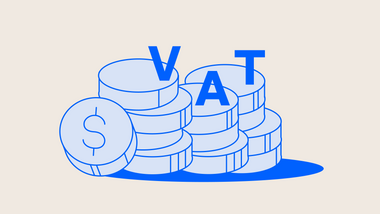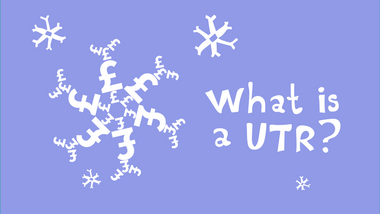Profit and Loss Statement (P&L) - What You Need to Know?
The second most common reason startups fail is the lack of cash. What can be done to prevent cash from disappearing into thin air?

A profit and loss statement (P&L) is the cornerstone of company bookkeeping. It is financial summary account of your business revenues and losses. It’s also referred to as your “income statement” as it shows your net profit or loss after expenses have been deducted.
This indicates whether your company can manage expenses, make sales and ultimately draw a profit. An important part of keeping track of your finances, including profits, cash flow and expenses. In this article, we’ll unpack how you can take advantage of the financial insights within your P&L statements specifically, so you can track the health of your business.
Skip to:
What Is A Profit & Loss StatementWhat's the Structure of a P&L Statement?
Types of Profit and Loss (P&L) Statements
What You Can Learn from P&L
Why Are Profit and Loss Statements Important?
Are All Companies Required To Prepare P&L Statements?
How To Organise Your Profit and Loss Statement: An Example
What Is A Profit & Loss Statement
One of the most important documents for any business owner is a profit and loss statement because it shows your revenues and expenses for a period of time: a month, a quarter, or a year.
The bottom line of P&L finance terms is the difference between the revenues and expenses over a period of time. If the difference is positive, it is profit. If the difference is negative, it is a loss.
As a general practice, the revenues are reported when earned, and expenses — when incurred. For example, the revenue from a sale is reported as soon as goods and services are supplied, even if the buyer has not paid you yet.
If you buy an advertising service for October — you report it in the P&L statement for October, even if you pay to an advertising company in September.
What's the Structure of a P&L Statement?
There are a couple of key categories that feature on a P&L statement. These all relate to what’s necessary and relevant to calculate your net income aka profit, and that begins with business operating costs being subtracted from revenues. The main sections generally fall under: “Costs” and “Income”, which each has related sub-categories that drill down into different types of costs or income.
Depending on what kind of business you run and the products or services you offer, you could expect the structure of your P&L statement to feature any of the following:
- Taxes paid
- Interest expenses
- Net income
- Cost of sales/goods sold
- Operating expenses (SG&A costs)
- Marketing & Advertising
- Revenue
- Tech-related Research & Development (R&D)
Let’s consider a practical example of how a business would prepare its profit and loss statement. “ChocoLife” is a small company with 2 employees. They produce artisanal chocolates in a rented kitchen space. In March, this is what their P&L looks like:

In Revenues, “ChocoLife” recorded monthly sales of chocolates. In March, one batch was returned due to quality issues. This is indicated in “Returns, refunds, etc” and is to be subtracted from the revenue. Revenues minus refunds give us the Net revenue:
$10,000 – $500 = $9,500
The cost of goods for “ChocoLife” includes the costs of cocoa and other ingredients used to produce chocolates. In March, “ChocoLife” used £2,500 to purchase these ingredients. What you include in the cost of goods depends on what you produce. For instance, if you are running a software as a service (SaaS) company, your cost of goods will mainly include server maintenance and hosting expenses.
Gross profit is the difference between Net revenue and Cost of goods:
$9,500 – $2,500 = $7,000
If you sell several products, it is convenient to include separate lines of revenue, cost of goods and gross profit for each product. This way you can see which product brings you more money.
Expenses are “operating costs” of the company which include all costs of running a business on a day-to-day basis, e.g. rent, salaries, advertising, supplies for the office, accountant fees, and business travel. For “ChocoLife”, operating cost consists of salary ($1,500), rent of the kitchen space ($800), supplies like chocolate forms ($100), and travel to Chocolate Fairs ($150), and advertising ($200). In March, all that cost $2,750.
In P&L, you should include the expense categories according to the needs and structure of your business. The goal here is to cover ALL the operating expenses.
EBITDA concludes the P&L statement. EBITDA stands for “Earnings before Interest, Tax and Depreciation” and is calculated as Gross profit – Expenses:
$7,000 – $2,750 = $4,250
Positive EBITDA shows that the company is making a profit. Good job, “ChocoLife”!
Did you know that you can register your company in the UK with us. Our experts will guide you all the way!
Types of Profit and Loss (P&L) Statements
Cash Method
Also known as the cash accounting method, this is referred to when cash goes into, or out of, a business. It’s an immediate recognition of accounting for cash, only when it’s been paid or received. Many small business owners choose this method of only counting income when payments are received. With the cash method of a P&L, expenses, bills and other liabilities are also not counted until they are also actually paid.
Accrual Method
Different to the cash-based method above, with the accrual method of accounting, income is recorded when it’s billed and earned. This happens regardless of when money is received by the business. It tends to provide a more accurate view of a company’s finances, which is why the GAAP stipulate the accrual method of a P&L for financial reporting. This is because it gives a better line of sight of anticipated expenses and revenue, as opposed to immediate recognition.
What You Can Learn from P&L
You can learn whether your company is making a profit and on the road to success, which is the main goal for any business. You’ll know this by looking at what’s left when you’ve subtracted your expenses from your gross profit. These can be gleaned from the “Earnings before Interest, Tax and Depreciation” (EBITDA) we mentioned earlier. If the conclusion of this on your P&L is positive, it’s a sign you’re heading in the right direction.
By comparing P&Ls over different timeframes, you can also identify changes that’ll indicate whether you’re increasing revenue, reducing costs and consistently capable of making profits. Here’s an example of what a positive EBITDA means for a small business:
“ChocoLife” made a profit of $4,250 in March. This indicated that they have the opportunity to invest some of that money into better kitchen supplies to expand their range and speed up their production even more.
You can also calculate the gross margin and net margin of your business by looking at your P&L statements. Margins indicate how much higher your company’s revenue is in comparison to the cost of producing the goods (gross margin) and the total costs (net margin). Larger margins usually mean a viable business model. Entrepreneurs can also look at the margin to decide if the price is correct and provides a sufficient profit, and make changes based on what they learn.
Not sure how to figure out if your gross margin is high enough? Compare your company’s margins to the industry average and research the margins of companies similar to yours. Tapping into your competitive landscape allows you to see where you are in relation to others in the broader scheme of things. It’s also what investors will look at when considering whether it’s a good idea to give you capital.Margins are expressed as percentages which are calculated as Gross profit/Net revenue, and net margin is calculated as EBITDA/Net revenue. Let’s unpack that with our favourite chocolatier:
In March, “ChocoLife” had a gross margin of 75% and net margin of 49%. If the average margins for chocolate-making industry are 60% and 30%, “ChocoLife” has an attractive case to present to potential investors.
You can also use a P&L statement to make projections for future profits using expectations of sales and cost. Realistic P&L projections are a great tool to help in business decision-making - like whether you can afford to invest in new software or hire a new team member.
Finally, with the P&L statement, you can also see the structure of the expenses and how they affect your revenues.
ChocoLife’s owner, Emily, sees that her advertising cost share is growing over time, while revenue is staying the same. This may indicate her company isn’t utilising the best advertising channels for ROI or a supplier that’s not suited to her business objectives.

Why Are Profit and Loss Statements Important?
Balance sheet, cash flow statement, profit and loss statement. Those are 3 of the most important types of financial statements you’ll need to prepare if you’re a business owner. They aren’t just important, they are also a legal requirement to operate according to UK government regulations. By showing your revenue and expenditure over a fiscal year, you allow analysts and investors to assess how profitable you are. They will also take into account the two other statements mentioned above. To calculate return on equity (ROE), investors will compare your net income (as reflected on your P&L) with your shareholder’s equity (as reflected on your balance sheet).
Are All Companies Required To Prepare P&L Statements?
You are required to prepare your business’s P&L statements along with any other financial paperwork and submit them to Companies House. Micro-entities are exempt from this requirement. However, if you choose not to deliver a copy of your P&L, the company must state this on the balance sheet.
During this process of statement preparation, you need to make sure you’re adhering to the guidelines that are set out according to what’s referred to as generally accepted accounting principles (GAAP).
If you are in doubt, ask your accountant.
How To Organise Your Profit and Loss Statement: An Example
Remember, your P&L is all about the bigger picture and that’s something you should never lose sight of. Tracking your money from the word go is important because it means you’ve got one eye on the future as you learn from the present.
Using Excel or to other excel alternatives organise your financial records is a common approach for many entrepreneurs, especially at the early stages. There are various free and premium online accounting software options to choose from (FreshBooks, Xero, ZohoBooks etc) that’ll help you organise your profit and loss statement. The choice comes down to how proficient you are in Excel, your preferences and the complexity of your business model. If you do choose to use Excel, remember to keep your files in a cloud service (Dropbox, Google Drive, SharePoint etc) to avoid losing them. Here are a few other pointers when laying out a P&L in Excel:
Keep all operations with money in separate tables and input them as they happen. This is also an opportunity to review and double-check that nothing out of the ordinary creeps in without you being aware.
Set up your P&L table to be automatically filled so it harmonises the data that’s linked to other tables with revenues, expenses, and cash operations. Less guesswork, more efficiency.
Update & review your P&L statement monthly - this minimises the risk of unexpectedly running out of money. It’s also good practice to look over these tables regularly to see how your business is going and put a human lens on that automated data.
Get a service provider who’ll handle your P&L for you. That’s us! To avoid any mistakes or understand more detail about managing your finances, reach out to an online accounting services provider like Osome.







